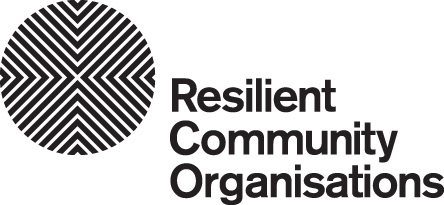Community Sector is Under Insured
Community organisations are often under-insured.
In one survey while approximately 65% of organisations reported being fully or partly insured against the loss of assets caused by an extreme weather event, just 40% reported full or partial business interruption insurance and fewer than 30% reported having full or partial insurance cover for contract losses. In addition, fewer than 20% were fully or partially insured against local staff absences.
Respondents from very small organisations were most likely to report being uninsured against each of the variables measured, with the exception of local staff absence. Large organisations were most likely to report being uninsured against local staff absence and were equally as likely as very small organisations to report being uninsured against the loss of volunteers.
This lack of insurance across the sector contributes to organisations’ vulnerability to disaster risks and severely impacts their capacity to recover and, critically, to continue to deliver services in the short- and long-term aftermath of emergencies.
Types of Insurance
There are a range of insurance policies available but there is no one-size-fits-all insurance solution for CSOs. Your insurance needs will vary and a range of factors will be considered such as the type of service you offer, your size and location. For example, the risks an aged care facility will face will be very different to those faced by a phone counselling service.
Compulsory business insurance
Two forms of insurance are compulsory for most Australian businesses.
Workers’ Compensation
Every state and territory operates its own Workers’ Compensation scheme, which protects employees in the event of an accident or sickness. Each jurisdiction has different requirements. For more information, visit your state or territory’s workers’ compensation authority using the links in the further information section.
Compulsory Third Party
If you operate a vehicle, Compulsory Third Party (CTP) car insurance covers you for claims made against you for personal injuries arising from the use of your car. This type of insurance is a requirement of registering and operating a vehicle.
You should consider other forms of motor vehicle insurance to cover other risks and liabilities, such as damage to property or your own or another person’s vehicle.
Each state and territory CTP scheme is different. For more information on these schemes, visit your state or territory’s vehicle registration authority via the links in the Further Information section.[1]
Common types of business insurance
Common types of business insurance focus on assets and revenue, liabilities, and personnel. These include:
Professional indemnity/liability
Protects you from legal action taken against you if someone suffers a loss after following your professional advice or as a result of receiving your service.
Property
Covers damage or loss to buildings, contents and stock caused by insured events and accidental damage
Public liability
Covers your business for legal costs and compensation costs that you might have to pay if you are found liable to someone because you caused death or injury, loss or damage to their property, or economic loss due to your negligence
Product liability
Businesses that supply, deliver or sell goods, even in the form of services or repairs, may need cover against claims of goods causing damage, injury or death. Product liability cover protects you if any of these events happen to another person or business by the failure of a product you are selling
Theft and burglary
Theft insurance generally covers your business against loss or damage to your stock and contents if someone forces their way onto your premises, or uses deception to get in to your premises. It usually does not cover cash losses, which can be covered separately
Money
Covers your money for theft at the premises, in transit and at your private residence
Commercial vehicle
Many different types of policies are available, so make sure you understand the options before making a decision. Consider the three most common options below:
- Comprehensive
- Third party, fire and theft
- Third party property damage
Tax audit insurance
Covers costs incurred by your accountant, or registered tax agent, when notified by the Australian Taxation Office to conduct an audit or investigation into your tax liability
Business interruption
Covers businesses that suffer a loss because they cannot trade for a period of time due to loss or damage from a weather event, flood, fire or other insured interruptions
Deterioration of stock
Covers businesses for the deterioration of chilled, refrigerated or frozen goods and stock if a refrigerator or freezer unit storing these goods breaks down and spoils the items
Glass
Covers the replacement of external and internal glass, as well as specified glass items
Employee fraud or dishonesty
Covers against fraudulent or dishonest actions committed by employees that directly results in loss of money, negotiable instruments or goods
Workers' Compensation
Workers’ Compensation insurance is compulsory in all states and territories for businesses with a certain number of employees. For more information click here.
Machinery/Equipment breakdown
Covers machinery and equipment used in your business. Some policies may also cover stock damages as a result of the breakdown
Goods in transit/property in transit insurance
Covers the loss of, or damage to, goods you buy, sell or use in your business when they are in transit by road, rail, air and sea. It also covers damage to property – such as tools and equipment – while in transit within a defined set of geographical limits
Computer and electronic equipment
Covers accidental damage or loss to computers and electronic equipment and data
Business Insurance Checklist
It is important that you understand your insurance policies and your business needs. As your organisation will change over time it is crucial that you regularly review your policies. You may like to consider the following questions:
- Have you reviewed all your insurance policies and checked your policy inclusions and exclusions? If you don’t understand any aspect of your policies, now is the time to contact your insurer or a broker.
- Are your business inventory and valuations up to date and reflect current costs?
- Have you bought new vehicles or equipment, expanded the premises in the past year, signed a new lease, hired subcontractors or disposed of any assets?
- Have you recently assessed the risks to your business? For example, are you in a flood-prone area? What about cyber risk? The risks you are exposed to may change over time so they may be different to those that you identified when you first took out your insurance policy.
- What would happen to your business, your employees, suppliers and your customers if your business could not trade due to unforeseen circumstances? Do you have business interruption cover?
Insurance tips
- It is good to seek advice so you can understand which policies are out there. However, only your organisation can decide which policies are best for you as you are the only ones who truly understand your organisation’s risks, strategic priorities and needs.
- Bundle your insurance policies together to cut costs – ask for a deal.
- Approach a specialist broker who can create policies specifically for your organisation.
- When comparing policies it is important to understand what is covered, what is not covered, what the excess is and what is the geographic scope of the cover (ie does it cover your staff or volunteers when they are travelling interstate?)
- Want to reduce your insurance premiums? Then identify, avoid and manage your risks.





